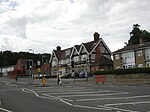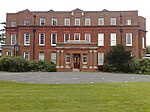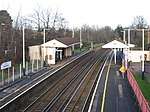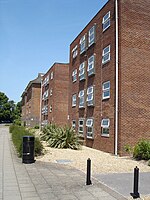St Alban's Church, Southampton
20th-century Church of England church buildingsChristian organizations established in 1932Church of England church buildings in HampshireChurches completed in 1933Churches in Southampton ... and 2 more
Grade II listed churches in HampshireNugent Cachemaille-Day buildings

St. Alban's Church, Swaythling, Southampton, stands on Tulip Road, just off the main Burgess Road. The church, and its associated hall, is a Grade II listed building.
Excerpt from the Wikipedia article St Alban's Church, Southampton (License: CC BY-SA 3.0, Authors, Images).St Alban's Church, Southampton
Honeysuckle Road, Southampton Swaythling
Geographical coordinates (GPS) Address Website External links Nearby Places Show on map
Geographical coordinates (GPS)
| Latitude | Longitude |
|---|---|
| N 50.939 ° | E -1.3874 ° |
Address
St Alban's Church
Honeysuckle Road 186
SO16 3BN Southampton, Swaythling
England, United Kingdom
Open on Google Maps







